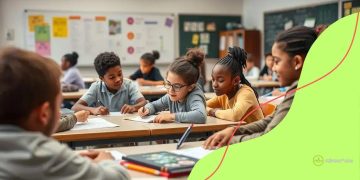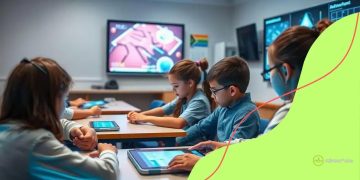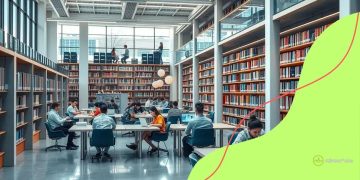The future of educational textbooks and resources
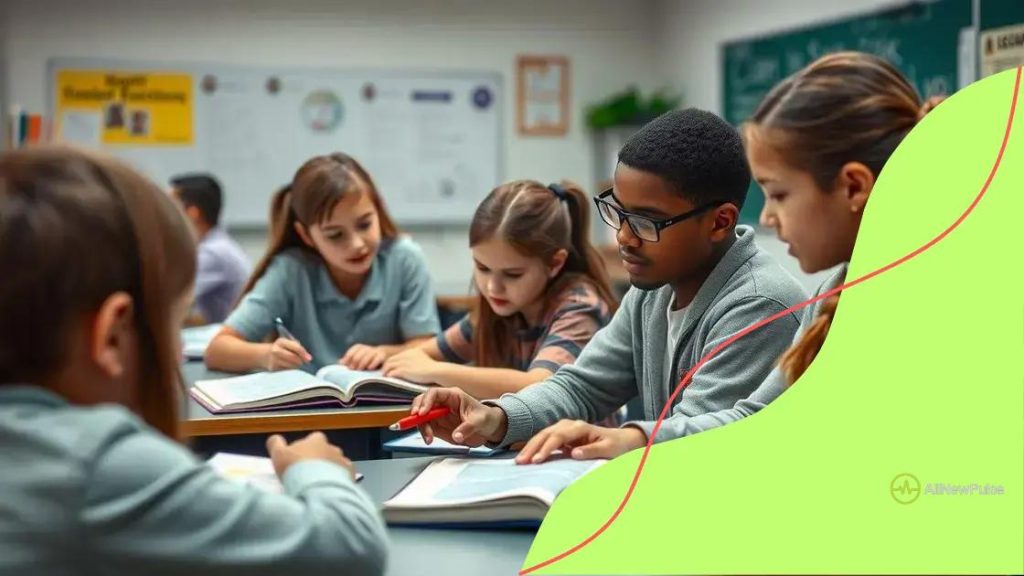
The future of educational textbooks and resources is defined by technology and innovation, allowing for enhanced interactivity, better engagement, and improved accessibility for students.
The future of educational textbooks and resources is evolving rapidly with technology at the helm. Have you ever wondered how this transformation might improve your learning experience? Let’s dive into what lies ahead.
The transition from print to digital textbooks
The transition from print to digital textbooks is reshaping how students and educators access information. As technology advances, the shift from traditional resources to digital formats becomes increasingly important.
Advantages of Digital Textbooks
One major benefit of this transition is accessibility. Digital textbooks are readily available at any time, making it easier for students to study on-the-go. This convenience can lead to improved learning outcomes.
- Cost-effectiveness due to reduced printing expenses.
- Interactive features that enhance engagement.
- Regular updates that ensure content is current.
Moreover, digital textbooks can include multimedia content, such as videos and interactive quizzes, which enrich the learning experience. These elements can captivate students’ attention and help them understand complex concepts.
Challenges Faced
Despite the benefits, several challenges accompany the transition to digital textbooks. Not all students have equal access to the necessary technology, potentially creating disparities in learning opportunities. Educators are also required to adapt to new teaching methods that incorporate digital tools effectively.
Some individuals may struggle with screen fatigue or prefer the tactile experience of reading physical books. It’s vital that schools provide adequate resources and support to help both students and teachers navigate this change smoothly.
The transition to digital textbooks is not just about technology; it’s about fostering a culture of innovation in education. By embracing this new format, we open doors to more dynamic and effective teaching methods. The journey can be challenging, but the potential rewards are profound.
Benefits of interactive learning resources
The use of interactive learning resources has revolutionized education by making learning more engaging and effective. These resources offer students an opportunity to participate actively in their learning process.
Enhancements in Engagement
One significant benefit of interactive resources is their ability to capture students’ attention. Instead of passively reading, learners can interact with the material through videos, quizzes, and simulations. This active involvement often leads to better retention of information.
- Increased participation during lessons.
- Motivating learners through gamified elements.
- Immediate feedback that helps students improve.
Moreover, these resources cater to various learning styles. Visual learners benefit from videos and infographics, while auditory learners can engage with podcasts or interactive discussions.
Personalized Learning Experience
Another advantage is the ability to tailor the learning experience. Interactive tools can adapt to individual learning paces, allowing students to progress according to their unique needs. This level of customization is often difficult to achieve with traditional textbooks.
As a result, students can explore subjects in greater depth, revisiting topics they find challenging. This personalized approach fosters a sense of autonomy in learning, empowering students to take charge of their education.
Ultimately, interactive learning resources not only enhance the education experience but also prepare students for a rapidly changing world. By embracing these tools, educators can create a more dynamic and responsive learning environment.
How technology shapes educational content
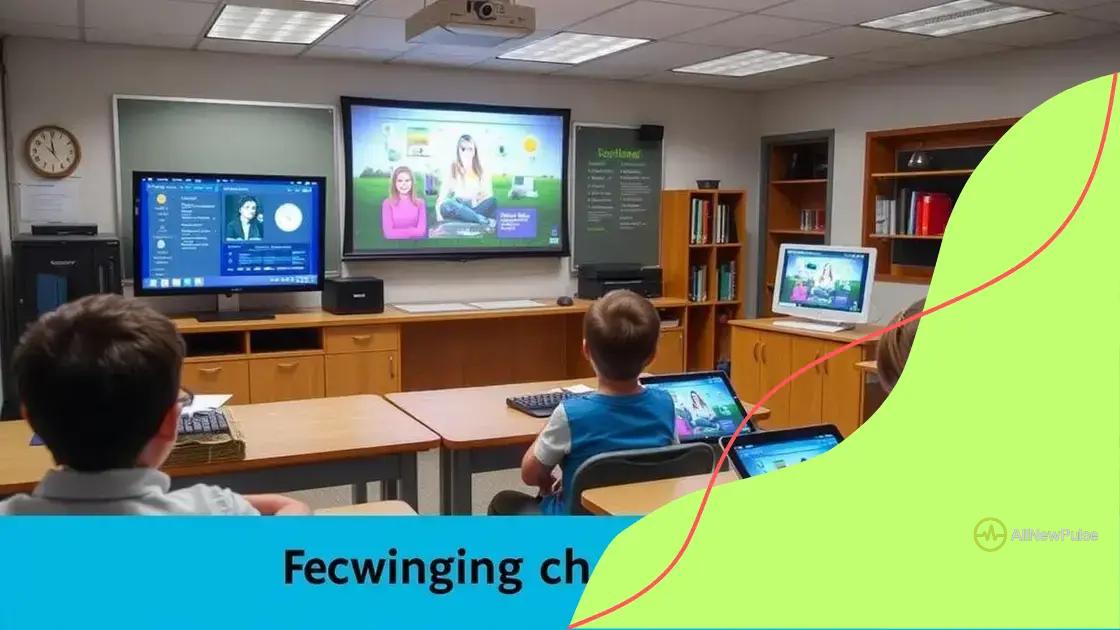
Technology plays a crucial role in how educational content is created and delivered. The integration of tech tools enhances the quality and accessibility of learning materials.
Integration of Multimedia
One way technology shapes educational content is through the use of multimedia elements. By combining text, images, audio, and video, educators can present information in a more dynamic way. This approach caters to different learning styles, making lessons more engaging and effective.
- Videos that explain complex topics visually.
- Interactive simulations that allow hands-on practice.
- Infographics that simplify and clarify information.
These elements not only make learning enjoyable but also help students retain information better.
Accessibility and Flexibility
Another significant aspect is the accessibility of content. Technology enables students to access materials anytime and anywhere. Whether on a computer, tablet, or smartphone, learners can dive into resources that suit their needs.
This flexibility is especially important for students who may need to review material outside of class or those who learn better at their own pace. Additionally, technology provides options for students with disabilities, ensuring that everyone has equal opportunities to learn.
In essence, the way technology shapes educational content continues to evolve, presenting new opportunities for both educators and students. By embracing these changes, we can create a richer and more inclusive learning environment.
Challenges in adopting new resources
Adopting new educational resources is essential but can come with significant challenges. Many educators and institutions face hurdles that impact the effective integration of these resources into the classroom.
Resistance to Change
One common challenge is the resistance to change among teachers and students. Some may feel comfortable with traditional methods and hesitant to try new approaches. This reluctance can slow the adoption of innovative resources that could enhance learning.
- Teachers may worry about the effectiveness of new tools.
- Students might struggle to adapt to different formats.
- Some educators fear losing control over their teaching styles.
This resistance can create a divide between those who embrace change and those who prefer the status quo.
Technical Issues
Another significant challenge is related to technology itself. Not all schools have access to the necessary infrastructure to support new resources. Issues such as inadequate internet connectivity or limited access to devices can hinder the effective use of educational tools.
Furthermore, technical difficulties can frustrate both teachers and students. When tools do not function correctly, it can disrupt the learning process. It’s crucial for institutions to prioritize reliable technology solutions to support their educational goals.
Additionally, insufficient training for educators on how to implement these new resources effectively can further complicate the transition. Without proper guidance, teachers may struggle to integrate new tools into their daily lessons, making it harder for students to benefit from them.
Addressing these challenges requires a collaborative effort from educational leaders, teachers, students, and parents. Creating an environment conducive to change can lead to more successful integration of new educational resources.
The role of educators in resource implementation
The role of educators in the implementation of new educational resources is vital. Teachers not only facilitate learning but also act as guides in adapting to new tools and methods. Their involvement is crucial for ensuring a smooth transition.
Training and Support
One primary responsibility of educators is to seek training and support on how to use new technologies effectively. By participating in professional development, teachers enhance their skills and become more confident in integrating resources into their classrooms.
- Participating in workshops to learn about best practices.
- Collaborating with tech teams to address challenges.
- Sharing insights with colleagues to promote collective learning.
This commitment to ongoing education empowers them to leverage technology to its full potential. When educators are well-equipped, they can inspire their students to take advantage of these resources.
Creating an Engaging Learning Environment
Educators also play a key role in creating an engaging learning environment. Their enthusiasm for new resources can spark students’ interest and motivation. By effectively showcasing how to use these tools, teachers enhance the overall educational experience.
For example, by incorporating digital projects, group activities, and interactive lessons, teachers can make learning more enjoyable. This not only helps retain students’ attention but also encourages active participation.
Moreover, educators must provide feedback and adapt their teaching strategies as students engage with new materials. By assessing how well students are absorbing information, teachers can fine-tune their approaches to meet learners’ needs.
Ultimately, the role of educators in resource implementation goes beyond merely using new tools. It involves an ongoing commitment to learning, fostering engagement, and adjusting teaching methods to create the best possible outcomes for their students.
FAQ – Frequently Asked Questions about the Future of Educational Textbooks and Resources
How are technology and innovation shaping educational resources?
Technology and innovation are revolutionizing educational resources by making them more accessible, interactive, and engaging for students.
What role do educators play in implementing new educational resources?
Educators are crucial in implementing new resources as they guide students in adapting to new tools and methodologies, ensuring effective integration.
What are some challenges educators face when adopting new resources?
Some challenges include resistance to change, technical issues, and the need for adequate training to effectively use new technologies.
Why is student engagement important in education?
High levels of student engagement are essential for effective learning as they promote participation, enhance retention of information, and inspire a positive attitude towards education.

